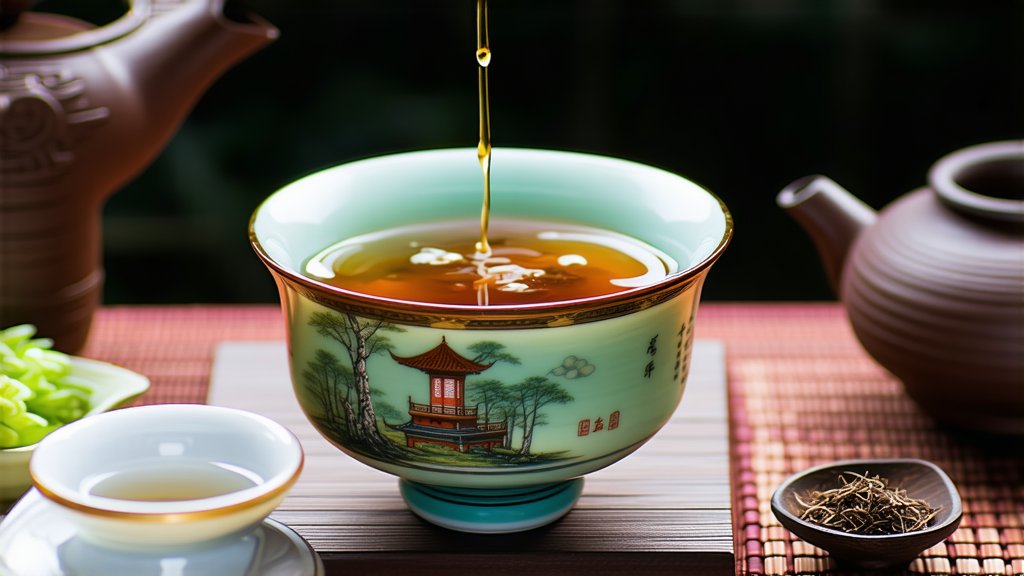
In the vast and diverse landscape of Chinese teas, few varieties hold the esteemed position that Fujian Silver Needle commands within the realm of white teas. As a distinguished member of the白茶 (Bái Chá) family, this exquisite tea originates from the mountainous regions of Fujian Province, China. Its name, translating to "Silver Needle," is derived from its delicate appearance—akin to silvery needles adorning the tea plants' buds. In this exploration, we delve into the history, types, manufacturing process, and tasting techniques of this revered tea, offering an insightful glimpse into its allure for both connoisseurs and casual tea enthusiasts alike.
A Glimpse into History
The cultivation and consumption of tea in China date back over 4,000 years, with white tea being one of the earliest forms discovered. Fujian Silver Needle, also known as Baihao Yinzhen, has its roots deeply embedded in Chinese history, particularly in the Fujian province. Legend has it that the tea was first created during the early Tang Dynasty (618-907 AD), though historical records suggest its prominence rose significantly during the Song Dynasty (960-1279 AD). Over centuries, it evolved into a symbol of purity and elegance, often reserved for imperial courts and high-ranking officials.
Types of Fujian Silver Needle
Fujian Silver Needle comes primarily in two grades: Tribute Eyebrow and Special Grade. Tribute Eyebrow represents the highest quality, consisting solely of the topmost buds plucked before the leaves fully unfurl. These buds are covered in fine, silvery down, giving them their characteristic shimmer. Special Grade, while slightly less exclusive, still maintains exceptional quality, featuring a mix of buds and young leaves. Both grades share a similar processing method but differ in terms of leaf to bud ratio and overall delicacy.
The Art of Tea Making
The production of Fujian Silver Needle is an art form that requires meticulous attention to detail. Harvesting occurs during early spring when the first flush of growth appears, ensuring optimal freshness and flavor. Here’s a step-by-step breakdown of the traditional manufacturing process:
-
Plucking: Only the youngest shoots, consisting of a single bud and its accompanying leaves, are handpicked. This selective plucking ensures only the finest quality material is used.
-
Withering: The freshly picked shoots are spread thinly on bamboo mats or trays under shade, allowing them to wither naturally. This process can take up to 72 hours, during which the moisture content decreases significantly without applying heat.
-
Drying: After withering, the tea undergoes a gentle drying process using low temperatures to remove any remaining moisture while preserving its natural flavors and aromas. This step is crucial in maintaining the tea’s delicate characteristics.
-
Sorting and Packaging: Once dried, the tea is sorted to separate buds from leaves and then packaged carefully to protect its purity and prevent contamination.
Savoring the Silver Needle Experience
To truly appreciate Fujian Silver Needle, one must engage in the ritualistic practice of Gongfu Cha, a traditional Chinese tea ceremony. Here’s how to prepare and savor this elixir:
-
Preparation: Begin by warming the teapot and cups with hot water to enhance the tea’s aroma. Discard this water before adding the tea leaves.
-
Infusion: Use approximately 5 grams of loose tea per 150ml of water. Pour boiling water (around 80-85°C) over the leaves and let them steep for about 2-3 minutes for the first infusion. Subsequent infusions can be adjusted based on personal preference.
-
Observation: Admire the pale golden color of the brewed tea, a testament to its light oxidation level. The liquor should appear almost translucent, reflecting the tea’s purity.
-
Aroma: Inhale deeply to capture the subtle floral and fruity notes, often described as akin to orchids or honeysuckle. The fragrance is an integral part of the tasting experience.
-
Tasting: Sip slowly, allowing the tea to coat your palate. Notice the smooth, velvety texture and the sweet aftertaste that lingers. Unlike more robust teas, Fujian Silver Needle offers a gentle, soothing experience.
-
Multiple Infusions: This tea is known for its resilience; multiple infusions can be made from a single serving of leaves, each revealing new dimensions of flavor and aroma.
Conclusion
Fujian Silver Needle stands as a testament to China’s rich tea heritage, embodying elegance, refinement, and a deep connection to nature. From its storied past to its meticulous production process and the meditative act of tasting, every aspect of this tea invites appreciation and mindfulness. As you embark on your own journey with Fujian Silver Needle, remember that each cup is not just a beverage but a bridge connecting you to centuries of tradition and the serene landscapes of Fujian Province.